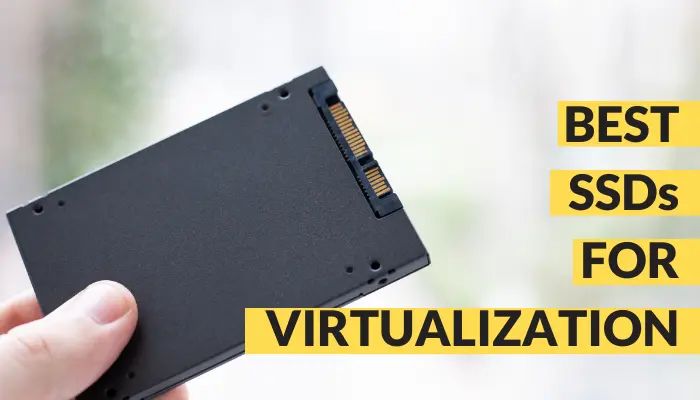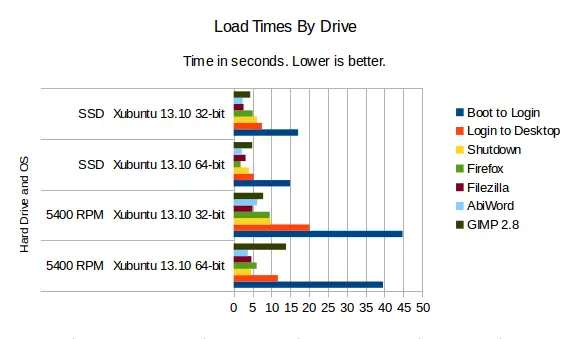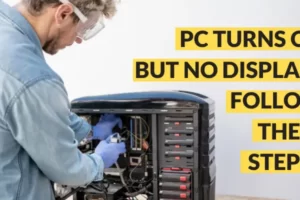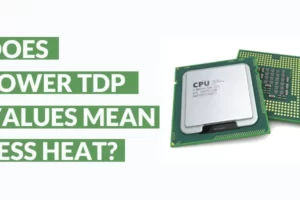If I select one PC hardware unit to award the most disruptive innovation of the decade, it has to be an SSD.
There was a time when the upgrade route was generally more RAM or a better CPU. But today, if you ask anyone how to make your PC faster and more responsive, the unanimous answer will be getting an SSD.
You will hardly find laptops today without one. While hard drives are still relevant regarding GBs per dollar as archive storage units, SSDs are where the core programs get installed for better performance.
Before this, I discussed the importance of SSDs in tasks like video editing and gaming.
Today let me discuss SSDs and their importance in the context of virtualization.

What is Virtualization?
Most of you reading this already know the virtualization process fairly.
Yet given the context, let me brush up on the concept of virtualization.
Virtualization is a way to utilize your system resources in the most effective way possible. Optimization is the game’s name in virtualization and is the foundation of modern cloud computing.
Virtualization is the process of creating abstract layers within a system using a given set of hardware components.
The method uses software to create these layers, allowing hardware resources like CPUs, memory, drives, etc., to create multiple computers virtually.
Each virtual computing layer has its own operating system and acts like a separate computer, even though it just shares a slice of the system hardware.
That is where paying attention to the kind of hardware you will use for your VM makes sense. An optimized virtual machine (VM) in terms of software and hardware ensures the effective utilization of resources and the production of precise outputs.
Therefore, analyzing each hardware component to build a VM is crucial. In this article, I will limit our discussion to SSDs. Otherwise, the article will become too tedious to digest.
That said, watch for subsequent articles on virtualization and the best hardware for VM machines.
Are SSDs Good for Virtual Machines?
Is it worth paying attention to SSDs when it comes to VMs?
Yes, SSDs do an excellent job at elevating the performance of your core system and, therefore, virtual machines. Given how SSD prices are consistently reducing, I recommend using SSDs on your host machine running VMs.
As you can see in the chart below, having SSDs on the host system positively impacts VM performance.


Image Credits : DelightlyLinux
It comes down to the fact that SSDs are inherently fast storage devices.
If you are developing a system purely for personal homelab, for instance, that only you will access, you will probably be fine with HDDs.
That being said, SSD prices have continued to drop over the years, and it only makes sense to deploy them in your homelab too.
- Talking about homelab, this article on the best server racks for homelab is worth looking at.
VM performance also depends on how the host drive is being used.
So, if you have an active VM and at the same time have apps that read/write on the drive, the performance will be affected.
SSDs have superior read/write speeds over HDDs, so the system performance bump will be evident.
Moreover, peak slowness is observed when the reading and writing on the drive happens from within the VM. This is visibly true when the VM is booting.
SSDs can reduce the boot times significantly.
Also, mechanical drives tend to fail more when compared with good-quality SSDs.
Best SSDs for Virtualization
While there are several factors to consider when choosing the best virtualization SSDs, DWPD and TBW are the most important.
I will briefly touch upon all these factors before concluding the article, but these two factors must be your top parameters to consider.
And all the best drives for virtual machines that I will relay below will reflect that.
So, without any further delay, here are the top drives for virtualization that you need to consider.
1. Samsung 970 Evo Plus NVMe M.2 SSD
Best Overall SSD for Virtualization
- Always Evolving SSD: The 970 EVO Plus is powered by the latest V-NAND technology and firmware optimization, maximizing the potential of NVMe bandwidth; Comes in storage capacities of up to 2TB, with reliability of up to 1,200 TBW.Computer Platform:PC.Voltage : 3.3 V 5 % Allowable voltage..Allowable Voltage : 3.3 V 5 % Allowable voltage
- Breakthrough Read/Write Speeds: The 970 EVO Plus reaches sequential read/write speeds up to 3,500/3,300 MB/s, up to 53% faster than the 970 EVO
- Samsung Magician for Data Security: This software provides a suite of user-friendly tools that help you keep your drive up to date, monitor drive health and speed, and even boost performance
- Superior Heat Dissipation: Samsung’s Dynamic Thermal Guard automatically monitors and maintains optimal operating temperatures to minimize performance drops
- 6 Year Limited Warranty: The 970 EVO Plus provides up to 600 TBW (Terabytes Written) with 5-years of protection for exceptional endurance powered by the latest V-NAND technology and Samsung's reputation for quality
Samsung has been producing quality SSDs for as long as I can remember. Most of my machines have them, and I have not found a deal-breaking complaint for their drives.
You cannot go wrong when using the 970 EVO Plus in your core VM projects.
With up to 1200 TBW of endurance, hardware encryption support, and a warranty of 5 years, it is tailor-made for VM-type operations.
The critical component of the SSD is the 9x-layer V-NAND which, in combination with EVO Plus’s optimized firmware, increases random read and write performance.
The 970 EVO Plus provides up to 3.5GB/s of sequential read performance and up to 3.3GB/s of write performance.
The drive also provides massive 620,000/560,000 random read/write IOPS, perfect for VM machines.
2. Intel Optane P5800X
Best VM SSD for Enthusiasts
First off this SSD isn’t for everyone.
It is crafted for experienced enthusiasts who know what they are doing, and the price tag reflects it.
If budget is not a concern and you have a niche project in mind, the P5800X is the best SSD you can hope for to run a virtual environment.
The P5800X can deliver 7.2 GBps of sequential bandwidth, its random performance is 1.5 million IOPS, and for the lowest size model (400GB), the endurance rating or TBW is 73 PB.
As you can see, the specs will make your VM run like a dream.
The P5800X was originally exclusively designed to operate in enterprise data centers. Initially, Intel hesitated to introduce it into the consumer segment, given they had killed off their entire line of Optane products for everyday desktop computers.
But they introduced the P5800X into the consumer market, giving in to the demands.
Once again, I reiterate this is a niche product meant for enthusiasts with good virtualization know-how, but it’s the absolute best money can buy.
- Speed reigns—Seagate’s FireCuda 530 dominates the SSD lineup, delivering pure performance, absolute power, the most advanced components, and unrivaled endurance
- Exhilarating performance up to 7300MB/s—harness the full power of PCIe Gen4 speeds to dominate next-generation games and apps
- Our fastest FireCuda SSD ever built for the ultimate in sustained, pro-level gaming and accelerated content creation—with transfer speeds up to 2x faster than PCIe Gen3 M.2 NVMe SSDs and 12x faster than SATA SSDs
- Includes custom built low-profile heatsink designed by EKWB and Seagate to help minimize thermal throttling and maintain peak performance for longer time periods of time
- Enjoy long-term peace of mind with the included five-year limited warranty and three years of Rescue Data Recovery Services
3. Seagate Firecuda 530
Best Fast SSD for Virtualization
- Speed reigns—Seagate’s FireCuda 530 dominates the SSD lineup, delivering pure performance, absolute power, the most advanced components, and unrivaled endurance
- Exhilarating performance up to 7300MB/s—harness the full power of PCIe Gen4 speeds to dominate next-generation games and apps
- Our fastest FireCuda SSD ever built for the ultimate in sustained, pro-level gaming and accelerated content creation—with transfer speeds up to 2x faster than PCIe Gen3 M.2 NVMe SSDs and 12x faster than SATA SSDs
- Includes custom built low-profile heatsink designed by EKWB and Seagate to help minimize thermal throttling and maintain peak performance for longer time periods of time
- Enjoy long-term peace of mind with the included five-year limited warranty and three years of Rescue Data Recovery Services
Seagate Firecude 530 is one of my absolute favorite recommendations for virtualization.
The SSD comes in varying storage capacities ranging from 500GB all the way to 4TB. The best part is even the 500GB variant has an excellent TBW rating of 640TB.
The Firecuda 530 is one of the fastest M.2 consumer SSD on the market, and its performance under sustained workloads is exceptional.
This explains why it is one of the most preferred SSDs for storage expansion of PS5.
The sequential read/write speeds on all capacities are north of 7GBps. Furthermore, the Firecuda 530 can deliver upwards of 1,000,000 random read/write IOPS for high-capacity drives which are perfect if you wish to run virtual environments on them.
Pricing is the biggest reason I am keeping the SSD low on the list. While the Firecuda 530 is the best NVMe SSD, you can look into getting it will weigh a bit heavy on your wallet.
The good thing is even for the 500GB variant; you get an exceptional TBW rating of 640TB.
So, if you are unwilling to compromise on quality and can make do with a smaller capacity, the 500GB is a worthwhile pick.
4. Samsung 980 PRO 2TB
Best Large Capacity SSD for Virtualization
- Next-level SSD performance: Unleash the power of the Samsung 980 PRO PCIe 4.0 NVMe SSD for next-level computing. 980 PRO delivers 2x the data transfer rate of PCIe 3.0, while maintaining compatibility with PCIe 3.0.
- Maximum Speed: Get read speeds up to 7,000 MB s with 980 PRO and push the limits of what SSDs can do. Powered by a new Elpsis controller designed to harmonize the flash memory components and the interface for superior speed – with a PCIe 4.0 interface that’s 2x faster than PCIe 3.0 SSDs and 12x faster than Samsung SATA SSDs – every component of this NVMe SSD is manufactured by Samsung for performance that lasts.
- A winning combination: Designed for hardcore gamers and tech-savvy users, the 980 PRO offers high-performance bandwidth and throughput for heavy-duty applications in gaming, graphics, data analytics, and more. It's fast at loading games, so you can play more and wait less.
- Efficient M.2 SSD: The 980 PRO comes in a compact M.2 2280 form factor, which can be easily plugged into desktops and laptops. Due to its size and thus optimized power efficiency, it’s ideal for building high-performance computing systems.
- Reliable thermal control: High-performance SSDs usually require high-performance thermal control. To ensure stable performance, the 980 PRO uses nickel coating to help manage the controller's heat level and a heat spreader label to deliver effective thermal control of the NAND chip.
An SSD’s endurance rating is proportional to its size.
A 2TB SSD will almost always have double the endurance of the 1TB version of the same drive.
Following that logic, you will observe that the 2TB version of the 980 PRO has an endurance rating of 1200, and the 1TB version is rated at 600W.
Therefore, if you are looking for a drive with a large capacity, the 980 PRO is the perfect choice.
Notice that the 970 PRO SSD offers 1200 TBW for 1TB capacity, but the 980 PRO is superior in sequential and random read/write speeds.
Also, the 970 PRO 1TB will cost you around $300 for a 1TB drive, and you can get the 980 PRO 2TB variant for around $130.
So, for higher capacity, it makes sense to choose the 980 PRO over the 970 PRO.
Powered by PCIe 4.0, the 980 PRO is perfect if you want an SSD that offers proper virtualization endurance while simultaneously providing bleeding-edge speed and performance.
5. Crucial MX500
Best Budget SATA SSD for Virtual Machines
- Sequential reads/writes up to 560/510 MB/s and random reads/writes up to 95K/90K on all file types
- Accelerated by Micron 3D NAND technology
- Integrated Power Loss Immunity preserves all your saved work if the power unexpectedly gets cut
- Aes 256-bit hardware-based encryption keeps data safe and secure from hackers and thieves
- Crucial 5-year limited warranty
The MX500 isn’t the fastest SSD in town, but it has held its ground over time for what it promised.
It is the best SSD option if you are too cautious with the budget.
Micron’s 64-layer 3D NAND powers MX500 which is why the drive performs so well at its price point.
Talking about endurance, the drive comes with a 5-year warranty and has an endurance rating of 360TB for the 1TB version.
It’s not huge compared to some of the top models already discussed here, but for the price, you get a reliable VM performance that is hard to match by other SSDs in similar price brackets.
Conclusion
A general answer to ‘how to make my PC snappier‘ is to get a good SSD. And yes, for most of it, that is a sensible answer.
However, for tasks such as intense gaming, virtualization, or anything that involves heavy I/O, a few things need to be paid attention to.
As we are discussing virtual environments, the core parameters to look for are IOPS, endurance, and price.
Taking IOPS and endurance ratings (TBW) collectively gives you an idea of, simply put, the ‘stamina’ of the SSD for VM operations.
That said, so much will depend on how you use the SSD. Not everyone uses SSDs to create virtual environments involving intense I/O activities. And, of course, there will be many who will.
Throughout the course of this article, I have used these parameters relatively to offer you the best SSDs you can get for virtualization.
You only need to assess your needs and budget, click on the relevant SSD choice from the list, and get going.
If you have any other questions, you can leave them in the comments section below, and I will see to it that they are answered.
Take care of yourselves, and I will see you at the next one!








